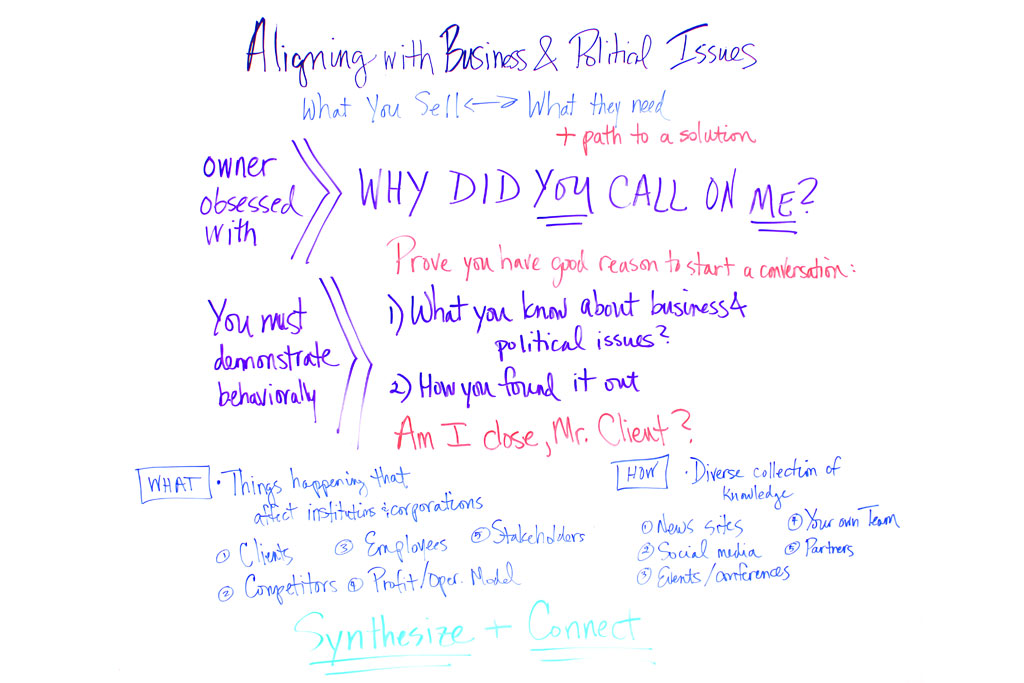RESET: Aligning With Business & Political Issues
January 17, 2014 | By Wayne O'NeillJust what are business and political issues? And why are they so important? How can aligning with a smart client’s business and political issues help you engage and ultimately connect for a profitable and rewarding relationship. Watch this video to learn more.

So I wanted to discuss today the importance of addressing business and political issues when you start a conversation with a client. This applies to you whether you’re the president of the company, the head of marketing, or you’re an account development professional trying to connect with the client. Because it’s not just what you sell and what that client needs, but it’s the pathway to this, to a solution that that client is really looking for.
Here’s the illusion that we all have about clients: We think that when we’re calling on a large university or a big healthcare system or, you know, someone in technology, like a Google or Yahoo, they have all the answers. They have it all figured out. They really don’t because in our owner practice we hear them complain all the time that they’re struggling with their model and how they need to grow.
So they’re asking a fundamental question even though they’re not making it obvious to you: Why did you call on me? What do you understand about me as a corporation or an organization or an institution that I may not see in myself, and maybe how can you help me because I have a blind spot to that?
So, psychologically, that’s kind of the setup for this. So how do you start to go down that journey. Well, here’s a really simple way to get your arms around that. Business and political issues, the”what” part of this question is really rooted in five fundamental questions.
- Who are their clients?
- Who are their staff, their employees? How is that model working?
- What is their operating model like over all? How did they make profit?
- Here’s a tricky one: Who are their stakeholders? You know, especially if you’re working in healthcare field or you’re working in higher education. Stakeholders are people who were not formally part of the organization, but they definitely have a big influence.
- And then last, and it’s not that it’s not important but we sometimes over focus, who are their competitors?
But every client wants to have sense on what your understanding of that is. So how do you go about because knowing those things and then the “how do you find out about those, those perspectives,” are important to that client as you start that conversation.
What they’re looking for is: Are you picking up information and context beyond Googling from the news sites?
Here’s a, here’s a good one. Are you talking to partners that are away from your discipline? If you’re an architect, are you talking to people in the information technology business that maybe doing business either in that vertical, like higher education or healthcare, or with that particular client?
Here’s another good one. Are you leveraging social media? You don’t get a pass if you’re in my age group. You gotta look at Twitter. You gotta leverage LinkedIn. You gotta pay attention to the detail of what a client is putting out with what they’re struggling with.
But here, if you’ve done all this homework and you’ve slowed this down, what I’m trying to get you to think about is not just get the meeting. Do preparation so that when you start that conversation – here’s what comes across is that president or that executive on that other side – they hear that you were trying to understand them, and that’s the root of starting a healthy account and something that could be professionally rewarding for your team and profitable and sustainable for you as a company. Thanks for listening today and be safe.
